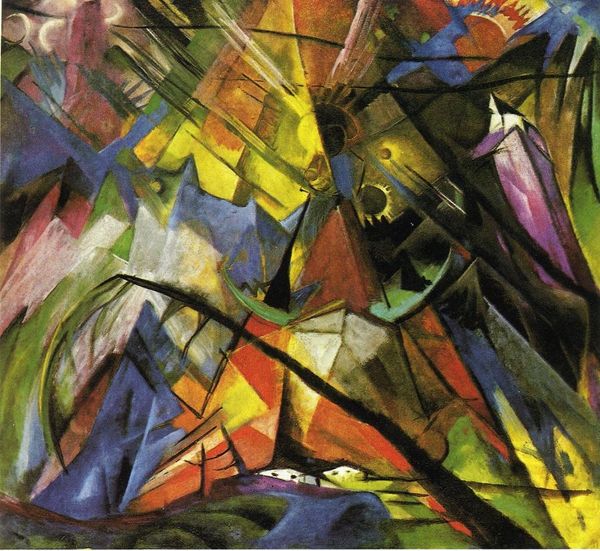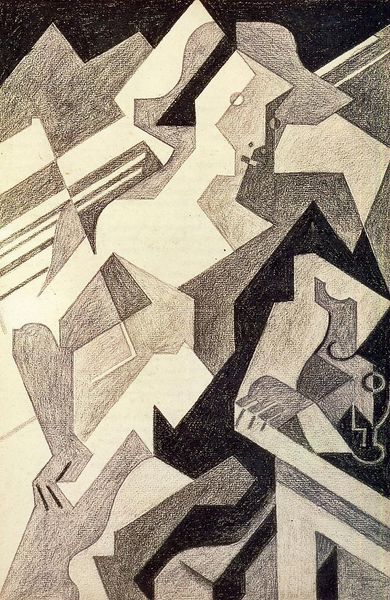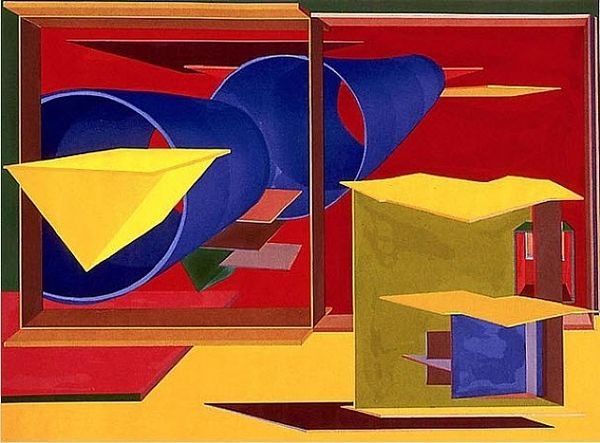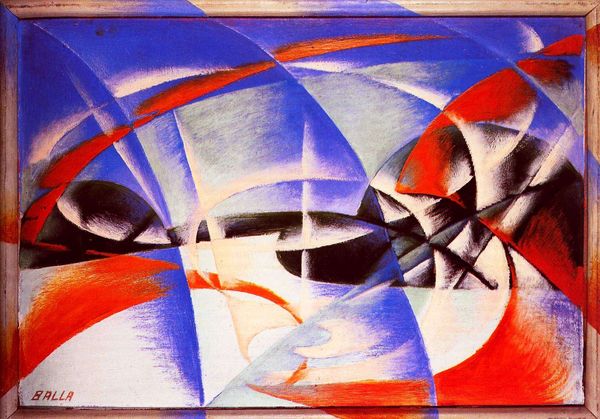
oil-paint
#
kinetic-art
#
abstract painting
#
oil-paint
#
possibly oil pastel
#
fluid art
#
neo expressionist
#
geometric
#
cityscape
#
abstract art
#
futurism
Copyright: Public domain
Editor: So, here we have Luigi Russolo’s “Dynamism of a Car,” painted in 1913 with oil. I find it so striking, this rush of red and black, almost overwhelming. How do you interpret this work, especially within its historical context? Curator: This piece practically vibrates with the Futurists' fascination with speed, technology, and the disruption of traditional society. It's not just about depicting a car; it's about capturing the sensation of movement, the almost violent energy of the modern world that was rapidly changing society. Consider that in 1913, industrialization was radically shifting class structures and labor dynamics. How do you see that reflected, if at all, in the painting's energy? Editor: I see how the chaotic composition mirrors that upheaval, but does the car itself take on a symbolic weight? Is it just speed or something more? Curator: Absolutely. The car, particularly to the Futurists, embodied masculine power, aggression, and a rejection of the past. They glorified war, saw traditional values as weak. Do you see elements of that potentially problematic glorification in the painting's bold colors and sharp angles? Editor: I hadn't considered it in such stark terms before, but looking at it now, there’s an undeniable violence in the painting's dynamism. Curator: It's a complicated relationship, admiring progress while also recognizing its potential for destruction and social upheaval. This painting acts as a stark reminder to critically engage with even the most aesthetically intriguing pieces. It provokes a re-examination of art’s ability to reinforce questionable ideologies, and the role it had during the period's changing ideas. Editor: Thinking about it that way has definitely deepened my understanding, moving past the surface-level excitement to consider its complicated sociopolitical layers.
Comments
No comments
Be the first to comment and join the conversation on the ultimate creative platform.













